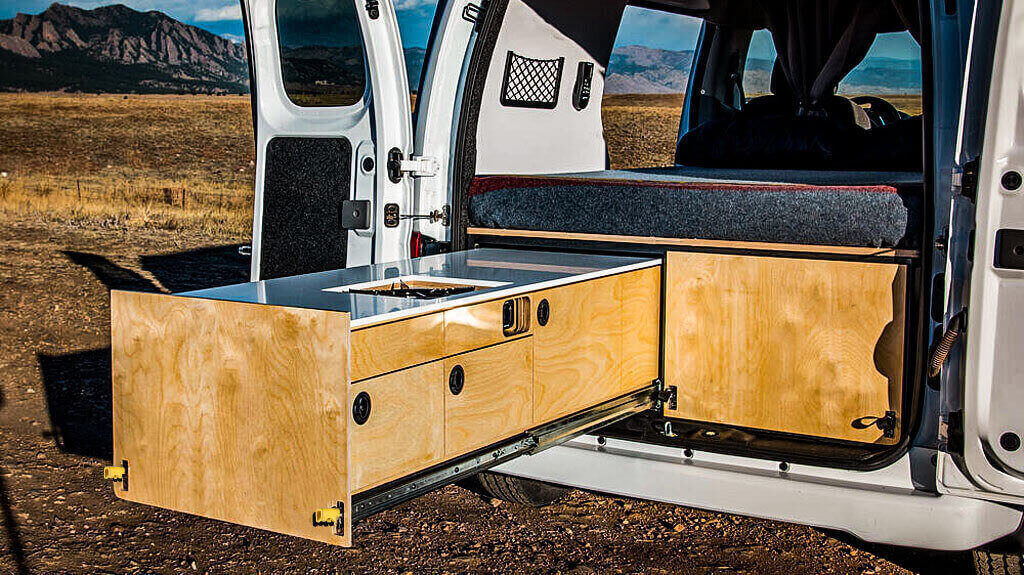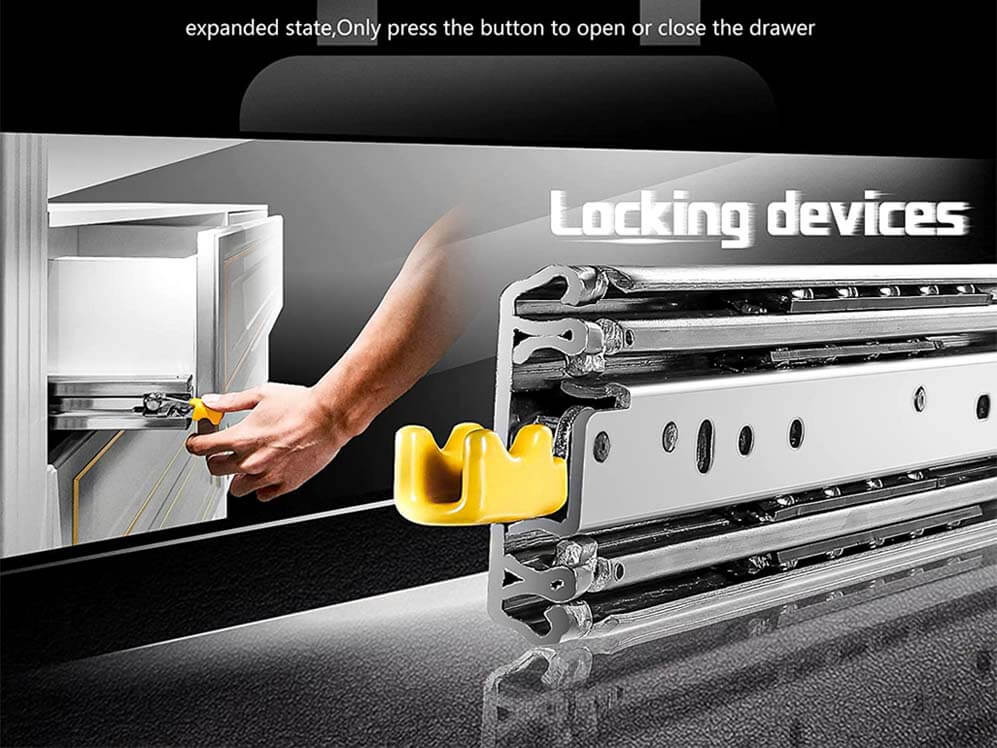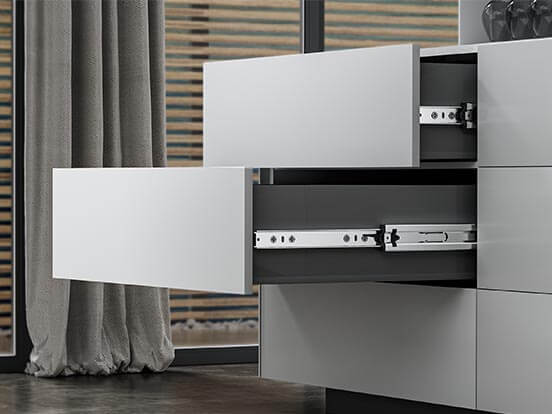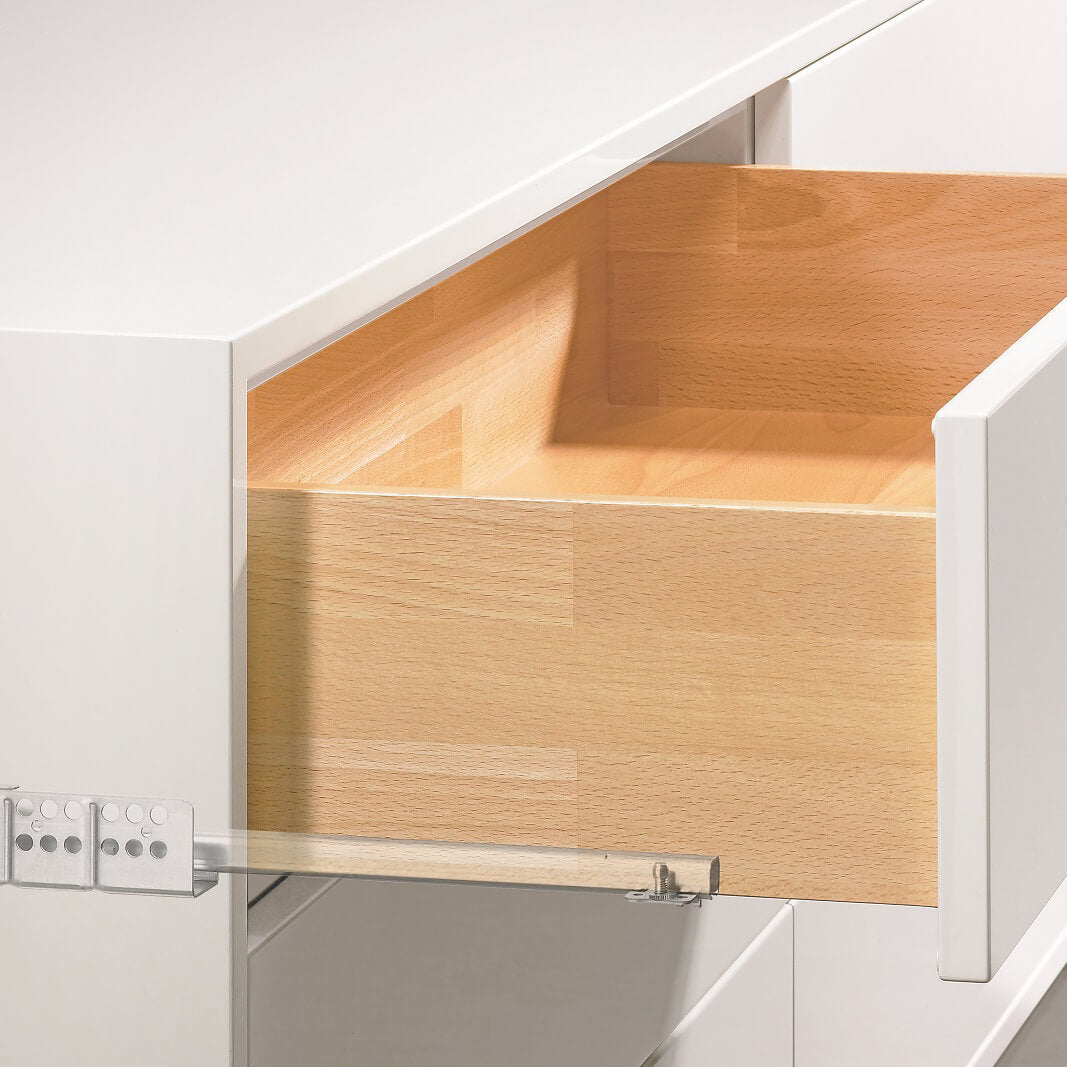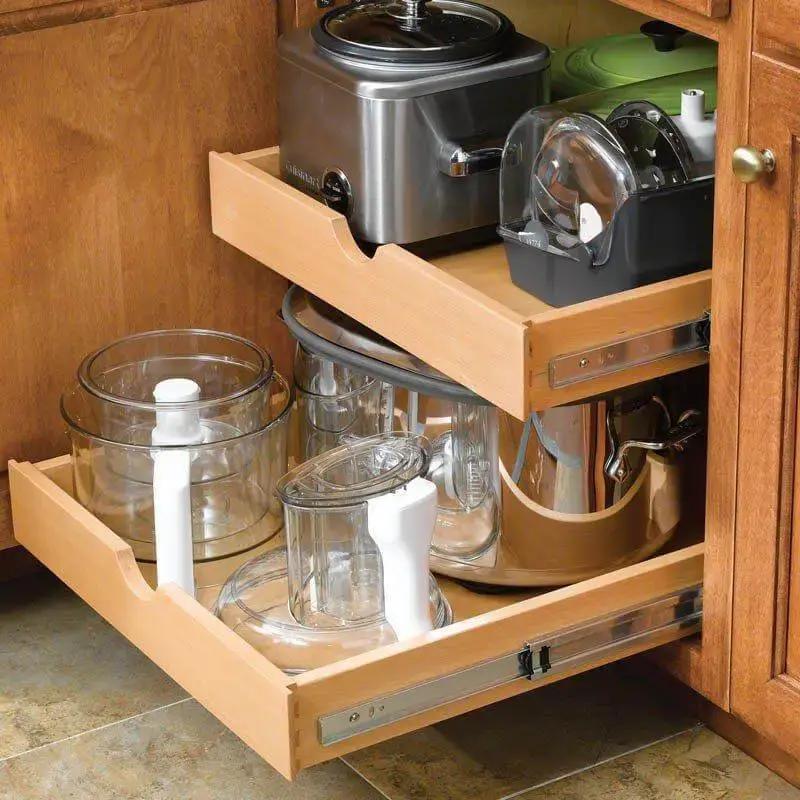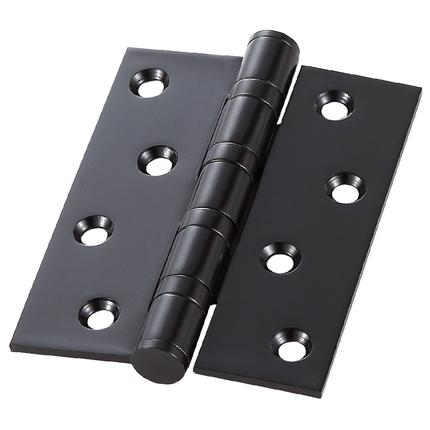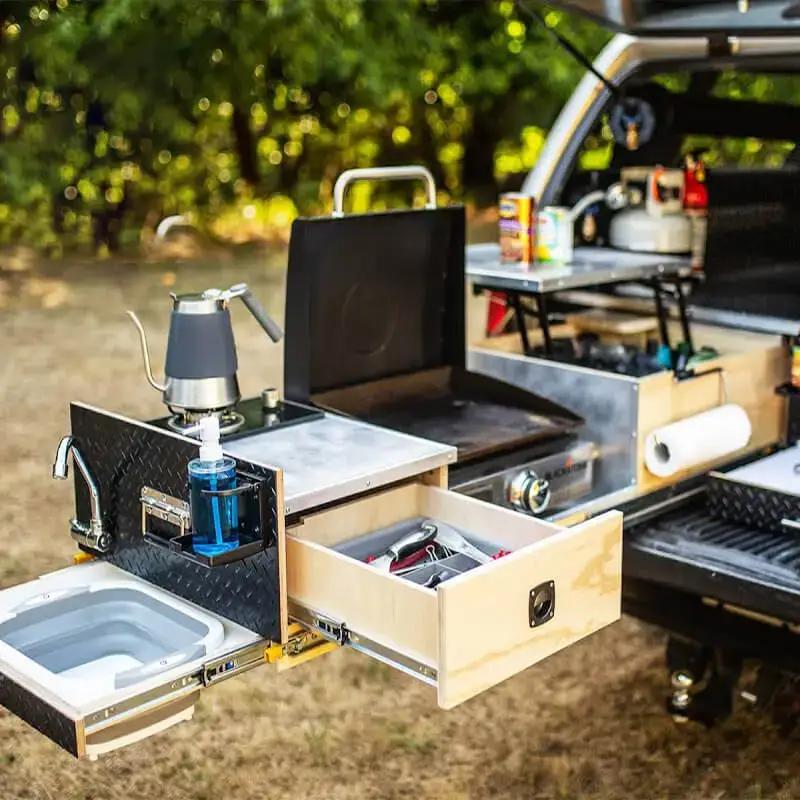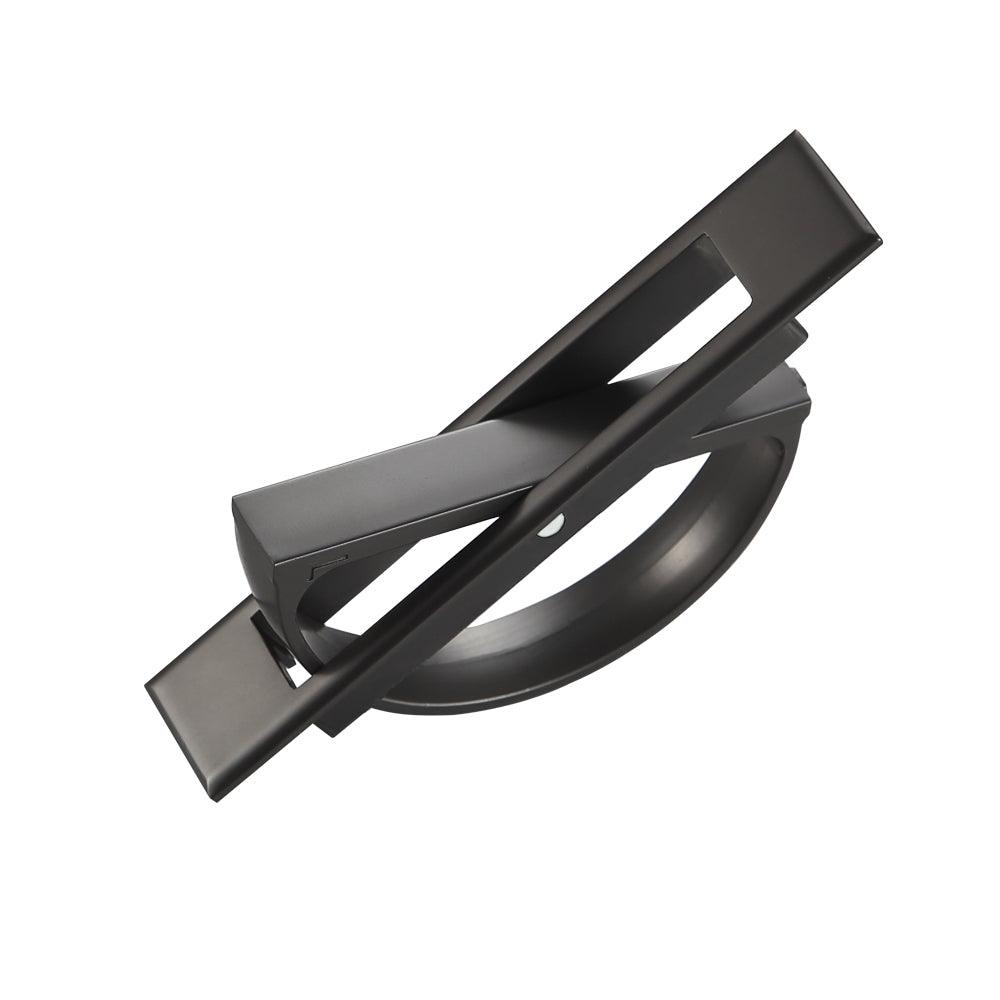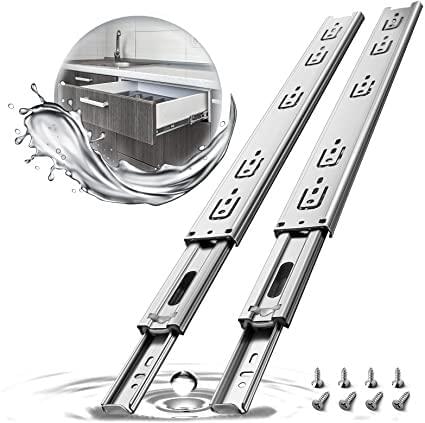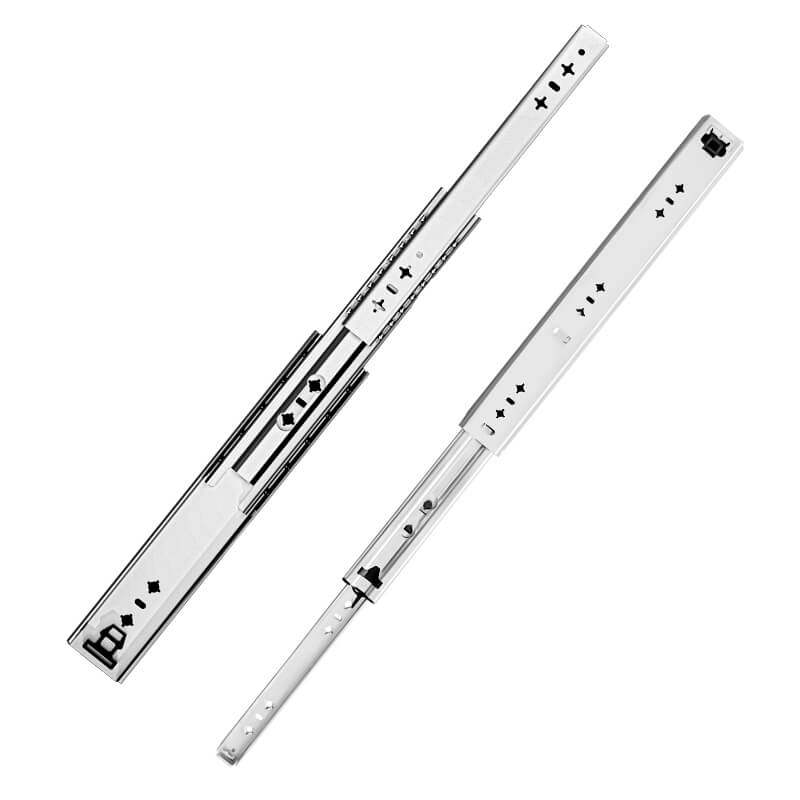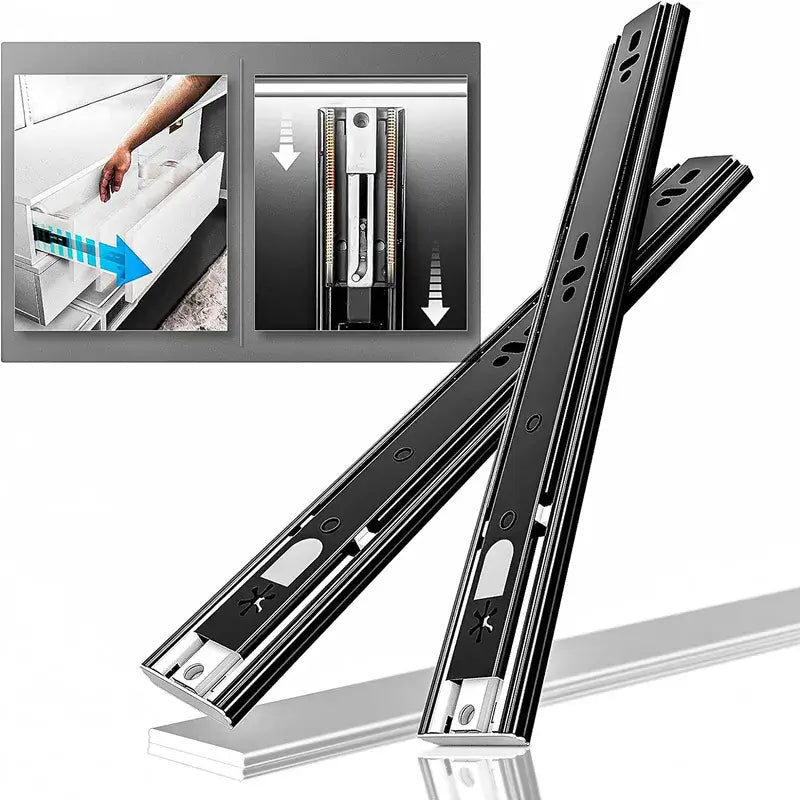Drawer slides play a crucial role in enhancing furniture functionality and ensuring smooth operation. They enable efficient storage by maximizing space utilization and promoting organization. With smooth-sliding drawer slides, accessing the contents becomes effortless, providing a seamless and user-friendly experience. Additionally, drawer slides contribute to the durability and longevity of furniture by supporting heavy loads and reducing wear and tear. Overall, drawer slides are essential components that significantly impact the functionality and usability of furniture pieces.
Metal Drawer SlidesAdvantages of Metal Drawer Slides
- High durability and strength: Metal drawer slides, such as those made from steel or aluminum, offer excellent durability and can withstand heavy loads without bending or warping.
- Excellent load-bearing capacity: Metal slides are known for their robust load-bearing capabilities, making them suitable for applications where heavy items need to be stored in the drawers.
- Suitable for heavy-duty applications: Metal drawer slides are commonly used in commercial settings or for furniture that requires frequent and rigorous use, such as office cabinets or workshop drawers.
- Resistant to warping and bending: The structural integrity of metal slides ensures they remain stable and functional even under significant weight or pressure.
- Smooth and reliable operation: Metal slides, particularly ball bearing slides, provide smooth and effortless drawer movement, allowing for easy access to the contents inside.

Types of Metal Drawer Slides
- Ball bearing slides: These slides utilize ball bearings to facilitate smooth movement and support heavy loads. They are commonly used in applications where full extension and high load capacity are required.
- Roller slides: Roller slides feature rollers or wheels that allow for smooth movement along the tracks. They are suitable for medium to heavy-duty applications.
- Euro slides: Euro slides, also known as European slides, are popular for their sleek design and ease of installation. They provide reliable functionality and are commonly used in modern furniture designs.
Considerations when Choosing Metal Drawer Slides
- Weight capacity requirements: Determine the maximum weight the drawer slide needs to support and choose a metal slide with a suitable load rating
- Size and dimensions of the drawer: Measure the dimensions of the drawer to ensure the slide length and width match properly.
- Cost considerations: Metal drawer slides tend to be more expensive than their plastic counterparts, so factor in your budget when making a decision.
- Desired functionality: Consider additional features like full extension, soft-close, or self-closing mechanisms based on your specific needs and preferences
Plastic Drawer Slides
Advantages of Plastic Drawer Slides
- Lightweight and cost-effective: Plastic slides are lighter in weight compared to metal slides, making them a cost-effective option for light to medium-duty applications.
- Smooth and quiet operation: Plastic slides often provide quiet and smooth movement, minimizing noise and vibration.
- Corrosion-resistant: Unlike metal, plastic is naturally resistant to corrosion, making plastic slides suitable for environments with high humidity or moisture.
- Easy installation and maintenance: Plastic slides are generally easier to install and require less maintenance than metal slides.
- Ideal for light to medium-duty applications: Plastic slides are commonly used in residential furniture, such as kitchen cabinets or bedroom dressers, where heavy loads are not a requirement.
Types of Plastic Drawer Slides
- Roller slides: Plastic roller slides feature rollers that allow for smooth drawer movement. They are commonly used in lighter applications where weight capacity is not a major concern.
- Friction slides: Friction slides rely on plastic friction pads to provide resistance and control the movement of the drawer. They are suitable for light-duty applications.
- Undermount slides: Undermount slides are installed underneath the drawer and are concealed from view. They offer a clean and minimalist aesthetic, typically used in modern furniture designs.

Considerations when Choosing Plastic Drawer Slides
- Weight capacity limitations: Plastic slides have lower weight capacities compared to metal slides, so ensure the chosen slide can support the expected load.
- Environmental factors: Consider the humidity and temperature conditions of the installation area. Plastic slides may be more suitable for areas prone to moisture or temperature fluctuations.
- Expected lifespan and durability requirements: Evaluate the anticipated lifespan and durability requirements of the furniture. Plastic slides may have a shorter lifespan compared to metal slides in heavy-use applications.
- Budget constraints: Plastic slides generally have a lower price point compared to metal slides, making them a cost-effective option for budget-conscious projects.
Comparison between Metal and Plastic Drawer Slides
- Load capacity: Metal slides generally have higher load capacities compared to plastic slides, making them suitable for heavy-duty applications.
- Durability and longevity: Metal slides are more durable and offer a longer lifespan compared to plastic slides, especially in demanding environments.
- Smoothness of operation: Both metal and plastic slides can provide smooth operation, but ball bearing metal slides often offer the smoothest and most effortless movement.
- Cost considerations: Metal slides tend to be more expensive than plastic slides, so consider your budget and the specific needs of your project when making a decision.
Conclusion
Choosing the appropriate slide material is essential for the overall performance and longevity of furniture. It is important to consider the specific requirements of your furniture application when selecting between metal and plastic drawer slides.
Frequently Asked QuestionsCan I use metal drawer slides in a humid environment, such as a bathroom?
While metal drawer slides are generally durable, they may be susceptible to rust and corrosion in high-humidity areas. It is advisable to choose slides specifically designed for moisture resistance, such as those made from stainless steel or with protective coatings.
Are plastic drawer slides suitable for heavy items like pots and pans?
Plastic drawer slides may not be the best choice for heavy items. They are more suitable for lightweight storage, such as clothing or office supplies. If you need to support heavier loads, it is recommended to opt for metal drawer slides with higher load capacities.
Can I replace my existing drawer slides with a different material?
Yes, it is possible to replace drawer slides with a different material, but there are a few considerations. You need to ensure that the new slides are compatible with your furniture and that they fit properly. Additionally, consider any differences in load capacity and installation requirements between the two types of slides. It's advisable to consult the manufacturer's instructions or seek professional assistance for a smooth replacement process.

